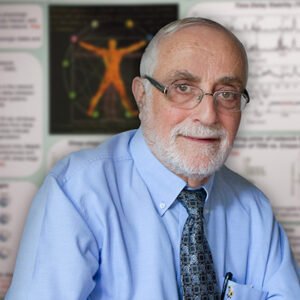
Biographical Information:
Prof. Shlomo Havlin has made fundamental contributions to the physics of complex systems and statistical physics. These discoveries have impacted many other fields such as medicine, biology, geophysics, and more. He has over 115,000 citations and h-index 150 in Google Scholar. Havlin has been Highly Cited Scientist in Web of Science between 2019-2021.
He is a professor in the Physics Department at Bar-Ilan University. He received his Ph.D. in 1972 from Bar Ilan University and he has been a professor at BIU since 1984. Also, between the years of 1999 – 2001 he was the Dean of the Faculty of Exact Sciences and from 1996 to 1999 he was the President of the Israel Physical Society.
Havlin received the Bakhuis Roosenboom Medal (Netherland 2023) an IOP Honorary Fellow (England, 2021), he won the Senior Scientific Award of the International Complex Systems Society, he won the Israel prize in Physics (2018), Order of the Star of Italy, President of Italy (2017), the Rothschild Prize for Physical and Chemical Sciences, Israel (2014), the Lilienfeld Prize for “a most outstanding contribution to physics”, APS, USA (2010), the Humboldt Senior Award, Germany (2006), the Distinguished Scientist Award, Chinese Academy of Sciences (2017), the Weizmann Prize for Exact Sciences, Israel (2009), the Nicholson Medal, American Physical Society, USA (2006) and many others.
Havlin has been a leading pioneer in the development of network science, with over 800 papers and books in the fields of statistical physics, network science, and interdisciplinary physical sciences. His main research interest in the last 15 years focus on interdependent networks, cascading failures, networks of networks and their implications to real world problems. The real-world systems applications include physiology, climate, infrastructures, finance, traffic, earthquakes, and others. Recently he discovered that the theory of interdependent networks can be proven experimentally in interdependent superconducting networks.
Abstract:
Experimental Proof of the Theory of Interdependent Networks: Novel Superconducting Phase Transitions
Interdependent networks appear in all aspects of nature and technology. Examples include our physiological systems in our body and infrastructures. A theoretical framework for percolation theory of interdependent networks will be presented. In interdependent networks, such as infrastructures, when nodes in one network fail, they cause dependent nodes in other networks to also fail. This may happen recursively and can lead to a cascade of failures and to a sudden fragmentation of the system. This contrasts with a single network where the percolation transition due to failures is continuous. I will present analytical solutions based on the percolation theory, for the functional network and cascading failures, for a network of n interdependent networks. Our analytical results show that the percolation theory of a single network studied for over 90 years is just a limited case, n=1, of the general and a significantly richer case of n>1. I will also show that interdependent networks embedded in space are extremely vulnerable and have significantly richer behavior compared to non-embedded networks. In particular, it will be shown that a novel phase appears where localized attacks of a microscopic critical size lead to cascading failures that dynamically propagate like nucleation and yields an abrupt macroscopic phase transition. I will finally show that the abstract interdependent percolation theory and its novel behavior in networks of networks can be realized and proven in controlled experiments performed by Aviad Frydman on real physical systems. I will present recent experiments that support the interdependent network theory performed in laboratory measurements of interdependent superconducting networks. Here, a novel abrupt phase transition is observed due to microscopic interactions between the macroscopic systems. This contrasts with an isolated system that shows a continuous phase transition.
References
Buldyrev, G. Paul, H.E. Stanley, S. Havlin, Nature, 464, 08932 (2010)
Gao, S. Buldyrev, H. E. Stanley, S. Havlin, Nature Physics, 8, 40 (2012)
Bashan et al, Nature Physics, 9, 667 (2013)
Majdandzic et al, Nature Physics 10 (1), 34 (2014); Nature Comm. 7, 10850 (2016)
Danziger et al, Nature Physics 15(2), 178 (2019)
Gross et al, PRL 129, 268301 (2022)
I. Bonamassa et al, Interdependent superconducting networks, Nature Physics 19, 1163 (2023)